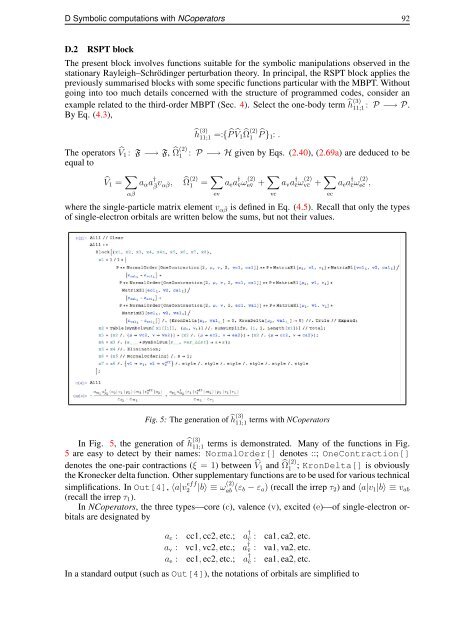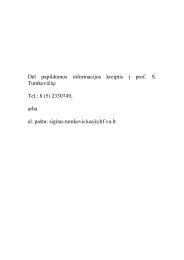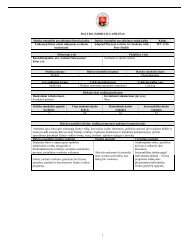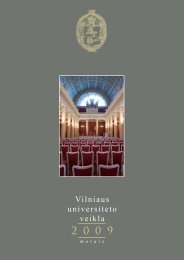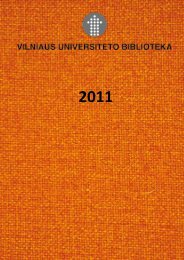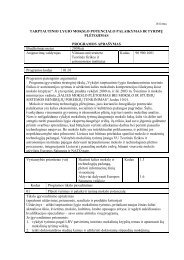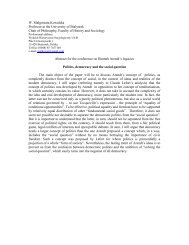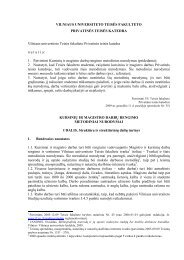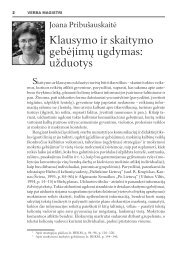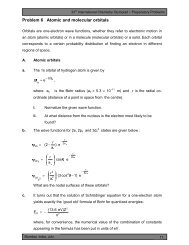D Symbolic computations with NCoperators 92D.2 RSPT blockThe present block <strong>in</strong>volves functions suitable for the symbolic manipulations observed <strong>in</strong> thestationary Rayleigh–Schröd<strong>in</strong>ger <strong>perturbation</strong> <strong>theory</strong>. In pr<strong>in</strong>cipal, the RSPT block applies thepreviously summarised blocks with some specific functions particular with the MBPT. Withoutgo<strong>in</strong>g <strong>in</strong>to too much details concerned with the structure <strong>of</strong> programmed codes, consider anexample related to the third-order MBPT (Sec. 4). Select the one-<strong>body</strong> term ĥ(3) 11;1 : P −→ P.By Eq. (4.3),The operators ̂V 1 : F −→ F,equal toĥ (3)11;1 =:{ ̂P ̂V 1̂Ω(2) 1̂P } 1 : .̂Ω(2)1 : P −→ H given by Eqs. (2.40), (2.69a) are deduced to bêV 1 = ∑ αβa α a †¯βv α ¯β,̂Ω(2) 1 = ∑ ev(2)a e a†¯vω e¯v + ∑ vc(2)a v a†¯cω v¯c + ∑ ec(2)a e a†¯cω e¯c ,where the s<strong>in</strong>gle-particle matrix element v α ¯β is def<strong>in</strong>ed <strong>in</strong> Eq. (4.5). Recall that only the types<strong>of</strong> s<strong>in</strong>gle-electron orbitals are written below the sums, but not their values.Fig. 5: The generation <strong>of</strong> ĥ(3) 11;1 terms with NCoperatorsIn Fig. 5, the generation <strong>of</strong> ĥ(3) 11;1 terms is demonstrated. Many <strong>of</strong> the functions <strong>in</strong> Fig.5 are easy to detect by their names: NormalOrder[] denotes ::; OneContraction[]denotes the one-pair contractions (ξ = 1) between ̂V (2)1 and ̂Ω 1 ; KronDelta[] is obviouslythe Kronecker delta function. Other supplementary functions are to be used for various technicalsimplifications. In Out[4], 〈a|v eff2 |b〉 ≡ ω (2)ab (ε b − ε a ) (recall the irrep τ 2 ) and 〈a|v 1 |b〉 ≡ v ab(recall the irrep τ 1 ).In NCoperators, the three types—core (c), valence (v), excited (e)—<strong>of</strong> s<strong>in</strong>gle-electron orbitalsare designated bya c : cc1, cc2, etc.; a †¯c : ca1, ca2, etc.a v : vc1, vc2, etc.; a †¯v : va1, va2, etc.a e : ec1, ec2, etc.; a † ē : ea1, ea2, etc.In a standard output (such as Out[4]), the notations <strong>of</strong> orbitals are simplified to
D Symbolic computations with NCoperators 93c : a 1 , b 1 , c 1 , d 1 , e 1 , f 1 ¯c : a 2 , b 2 , c 2 , d 2 , e 2 , f 2v : m 1 , n 1 , p 1 , q 1 , k 1 , l 1 ¯v : m 2 , n 2 , p 2 , q 2 , k 2 , l 2e : r 1 , s 1 , t 1 , u 1 , w 1 , x 1 ē : r 2 , s 2 , t 2 , u 2 , w 2 , x 2Therefore, <strong>in</strong> accordance with Fig. 5, the generated terms ĥ(3) 11;1 areĥ (3)11;1 = ∑ eva v a †¯vv ve ω (2)e¯v− ∑ cva v a †¯vv c¯v ω (2)vc .(D.1)The next step is to restrict the model space P to its irreducible subspaces P Λ , that is, to expandĥ (3)11;1 <strong>in</strong>to the sum <strong>of</strong> irreducible tensor operators W Λ (λ v˜λ¯v ). Refer to Eqs. (4.4), (4.17a).Consider the operators ĥ(3)+ 11;1 associated to ω (2)+α ¯β . In this case, it is easily done by us<strong>in</strong>g theexpression for SU(2)–<strong>in</strong>variant <strong>in</strong> the first row <strong>of</strong> Tab. 12: simply replace f(τ 2 λ µ λ ¯β)/(ε ¯β − ε µ )with Ω (2)+ (Λ) (recall Remark 4.1.1). But the present <strong>in</strong>variant has been obta<strong>in</strong>ed also mak<strong>in</strong>gµ ¯βuse <strong>of</strong> NCoperators. Thus, for the sake <strong>of</strong> clarity, the full procedure <strong>of</strong> angular reduction willbe demonstrated. This is, however, easy to perform.In Eq. (D.1), the first term conta<strong>in</strong>s the product <strong>of</strong> type ∑ µ v αµω (2)+ , while the second one –µ ¯βthe product <strong>of</strong> type ∑ µ v (2)+µ ¯βω αµ . These products determ<strong>in</strong>e the s<strong>in</strong>gle-particle effective matrixelements. Then∑e∑cv ve ω (2)+e¯v = ∑ λ em e(−1) λe+me f(τ 1 λ v λ e )〈λ v m v λ e − m e |τ 1 m 1 〉× (−1) λ¯v+m¯v ∑ΛΩ (2)+e¯v (Λ)〈λ e m e λ¯v − m¯v |ΛM〉,v c¯v ω (2)+vc = ∑ λ cm c(−1) λ¯v+m¯v f(τ 1 λ c λ¯v )〈λ c m c λ¯v − m¯v |τ 1 m 1 〉× (−1) λc+mc ∑ΛΩ (2)+vc (Λ)〈λ v m v λ c − m c |ΛM〉.F<strong>in</strong>ally, recall<strong>in</strong>g that a v a †¯v = (−1) ∑ λ¯v+m¯v Λ W M Λ (λ v˜λ¯v )〈λ v m v λ¯v − m¯v |ΛM〉, the expression<strong>in</strong> the first row <strong>of</strong> Tab. 15 (the case m = n = ξ = 1) is obta<strong>in</strong>ed by us<strong>in</strong>g the result <strong>in</strong> Fig. 1.A much more complicated task is to f<strong>in</strong>d Ω (2)+ (Λ). To generate the s<strong>in</strong>gle-particle effectiveα ¯βmatrix elements ω (2) , make use <strong>of</strong> the generalised Bloch equation <strong>in</strong> Eq. (4.2). It follows thatα ¯βω (2) is the sum <strong>of</strong> ω(2)α ¯β ij;i+j−1 (α ¯β) ∀i, j = 1, 2, where the coefficients ω (2)ij;i+j−1 (α ¯β) are obta<strong>in</strong>edfrom the terms:{ ̂R̂V îΩ(1) ĵP −̂R̂Ω(1)ĵP ̂V i ̂P }i+j−1 : .The operator ̂R—also known as the resolvent [34]—is def<strong>in</strong>ed here by the action on somefunctional F (x † f 1, x † f 2, . . . , x † f a, x i1 , x i2 , . . . , x ia ) on H so that̂RF (x † f 1, x † f 2, . . . , x † f a, x ¯f1 , x ¯f2 , . . . , x ¯fa ) = [ D a (f ¯f) ] −1 ̂QF (x†f 1, x † f 2, . . . , x † f a, x ¯f1 , x ¯f2 , . . . , x ¯fa ).The energy denom<strong>in</strong>ator D a (f ¯f) is found from Eq. (2.65); the vectors x ¯fk (x † f k) ∀k = 1, 2, . . . , a<strong>of</strong> the s<strong>in</strong>gle-particle Hilbert space are identified to be the s<strong>in</strong>gle-particle eigenstates | ¯f k 〉 (〈f k |).The example how to generate the ω (2)11;1 terms is demonstrated <strong>in</strong> Figs. 6-7: <strong>in</strong> Fig. 6, thêR̂V 1̂Ω(1) 1̂R̂Ω(1)1terms { ̂P } 1 are generated, while <strong>in</strong> Fig. 7, the terms {result, ω (2)11;1 conta<strong>in</strong>s 9 expansion termsω 11;1(α (2) ¯β)(ε ¯β − ε α ) = ∑ v αµ ω (1)µ ¯β − ∑v ν ¯βω αν (1) ,µ(αβ)ν(αβ)̂P ̂V 1 ̂P }1 are derived. As a


